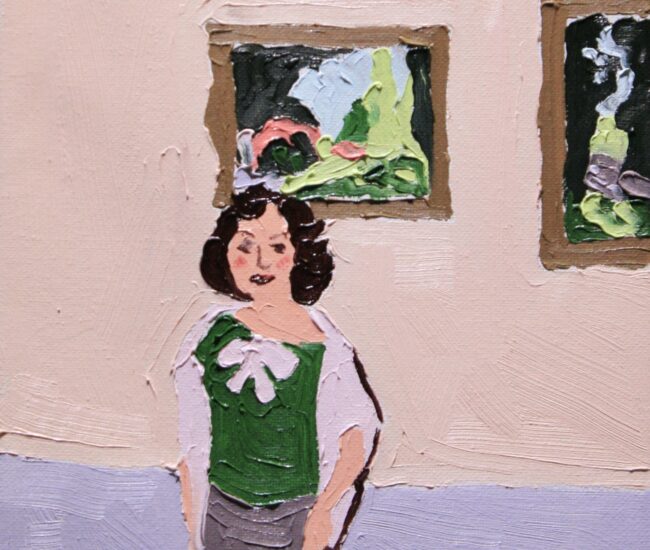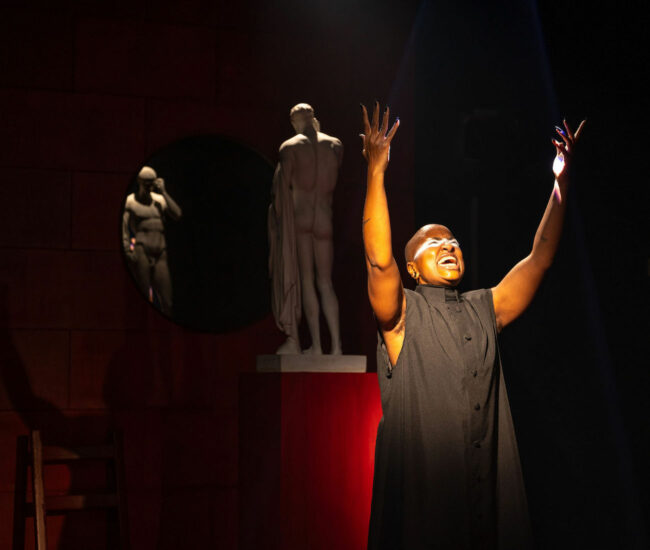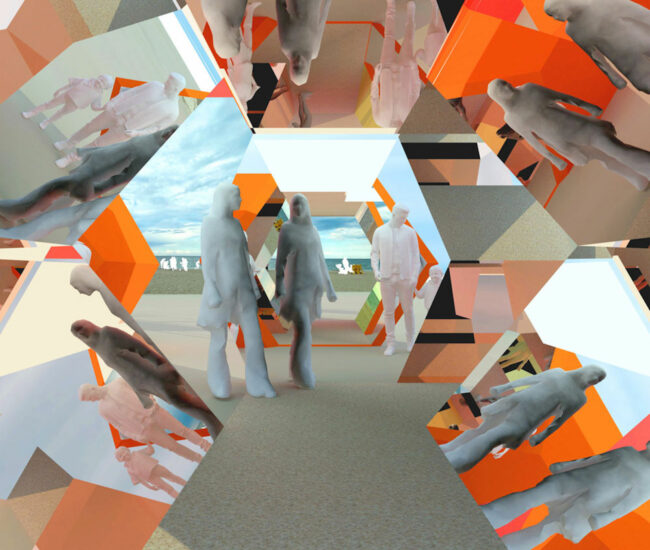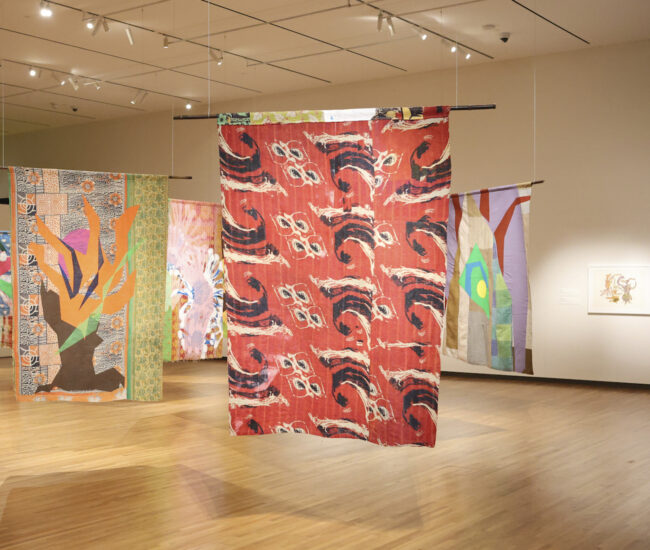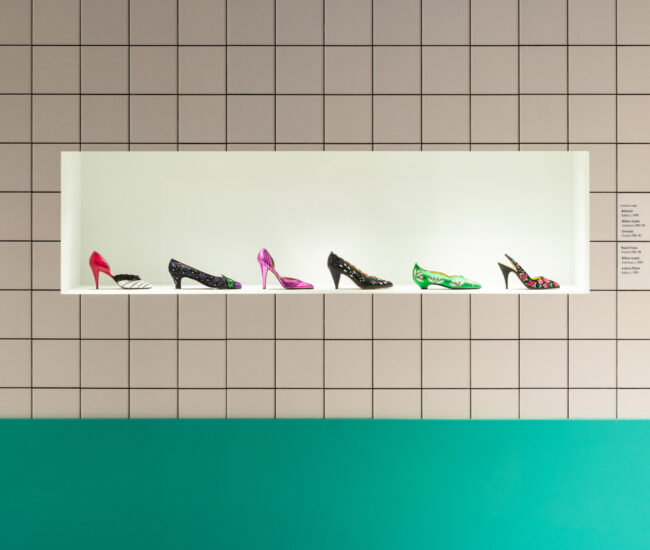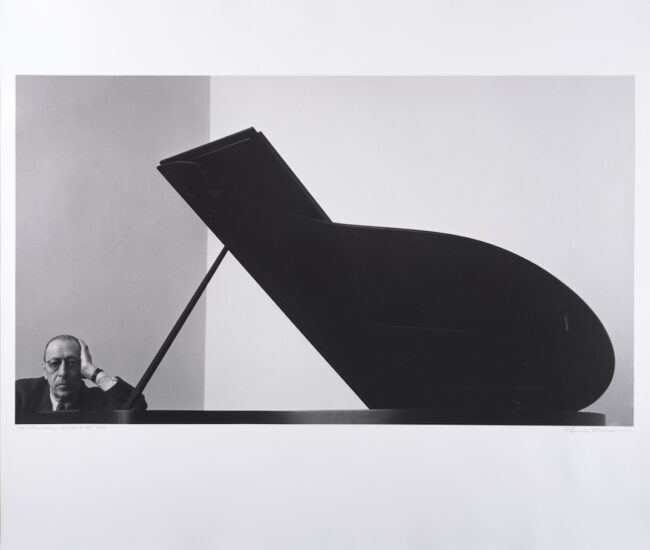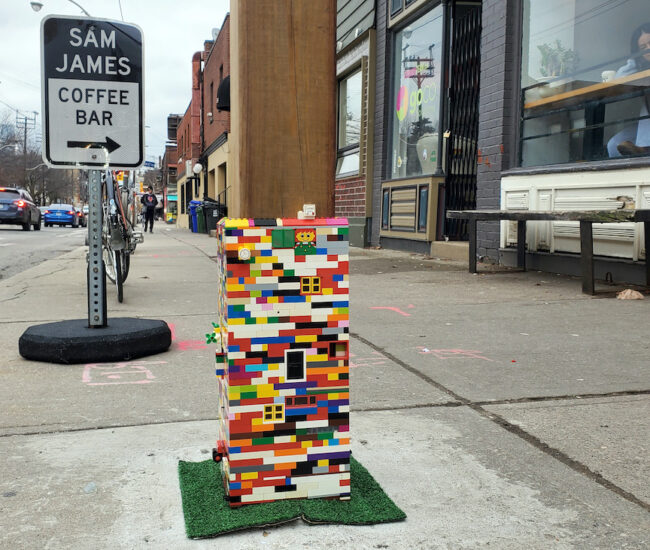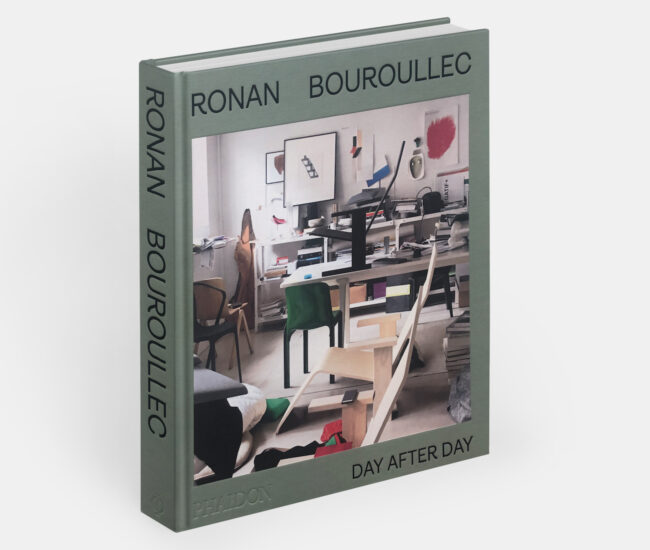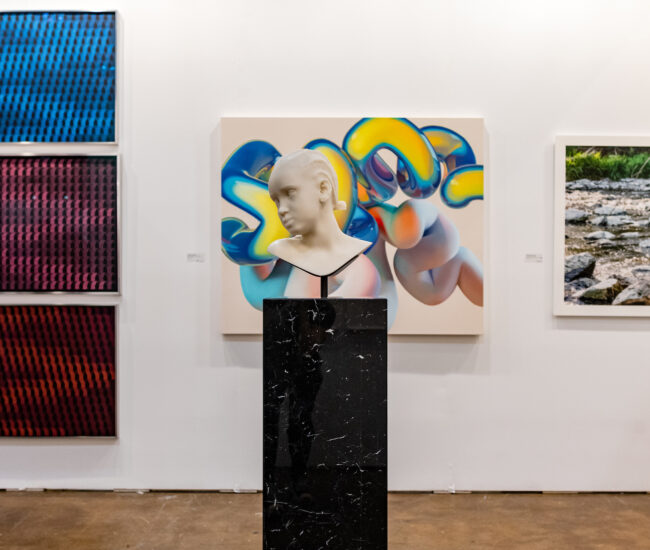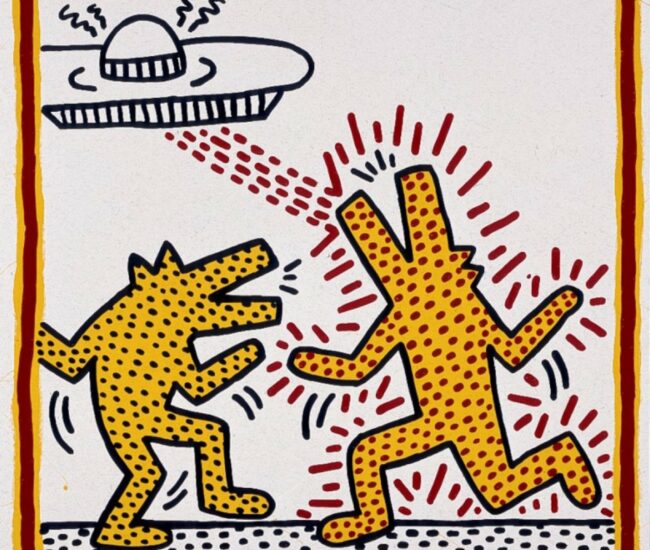The Room Where it Happens: In Conversation with ‘Hamilton’ Scenic Designer David Korins
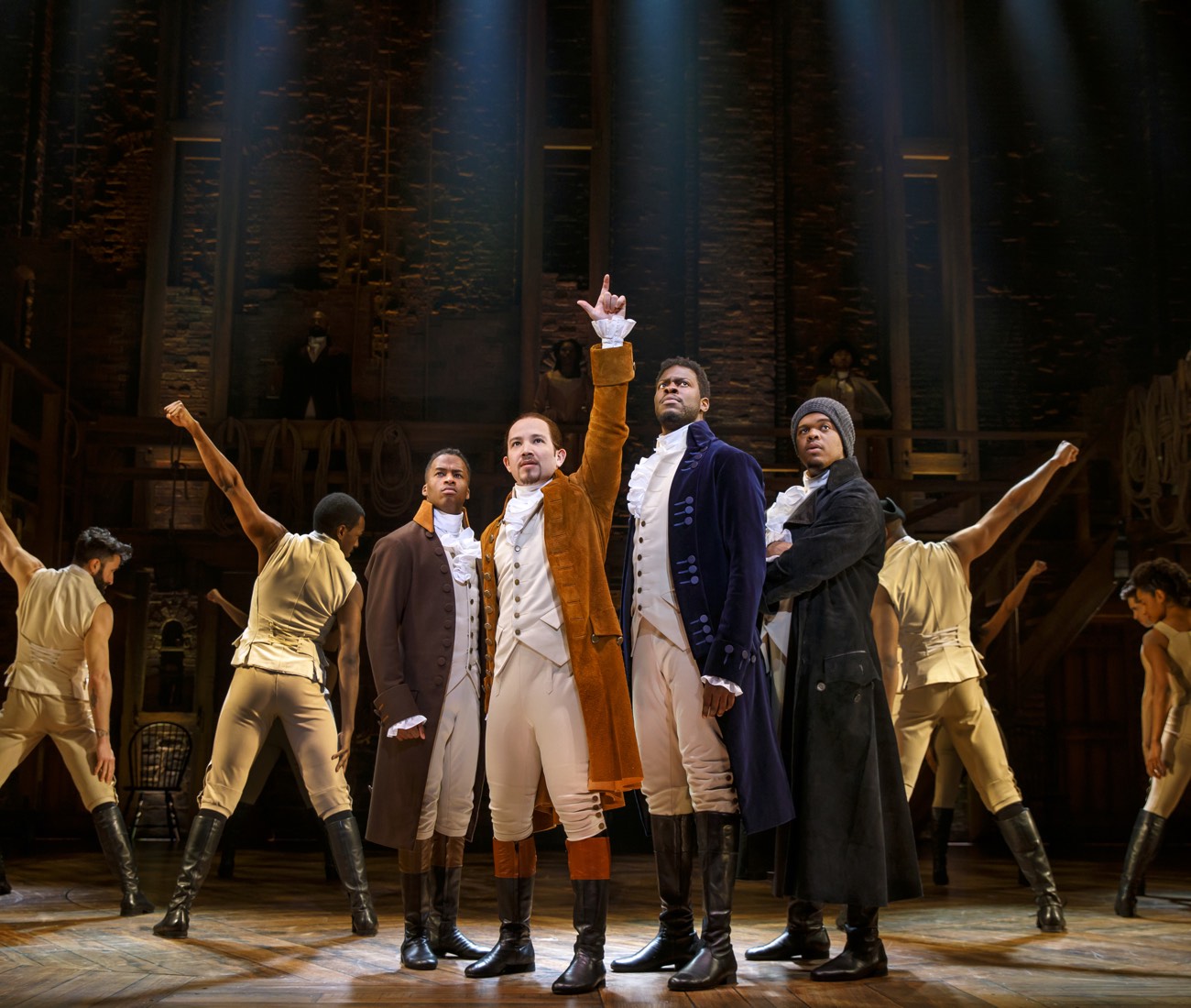
How the set of Broadway’s biggest play since The Producers was designed and built
It’s been five years since Hamilton premiered on Broadway, and finally – finally – the hip hop, soul, jazz and R&B telling of the United States’ “$10 founding father” is in Toronto at Ed Mirvish Theatre. Starting with the arrival of a young Alexander Hamilton in New York in 1776, Hamilton follows him through the American Revolution and continues into the fraught process of nation building until his death in a duel with longtime political rival and fellow founding father Aaron Burr in 1804. All told, the musical spans nearly 30 years of battlefields, ballrooms and cabinet meetings in 2 hour, 45 minute package.
Emmy award scenic designer David Korins ( http://www.davidkorinsdesign.com/ ), whose portfolio includes Beetlejuice, Dear Evan Hansen, and Grease: Live, was responsible for bringing it together on a single stage. Despite Hamilton’s breadth, the set is relatively pared down, with major elements including wooden scaffolding, a wood floor and coils and lengths of rope; the most complex elements are rising walls and a double turntable, a setup that includes a ring independently orbiting around an inner rotating floor. All of it, though, is calibrated to drive the story, and to highlight the actors telling it. DL chatted with Korins about how he brought Hamilton to life on stage, building new-old furniture that can take a beating, and why he designs sets for one person to experience at a time.

This conversation has been edited for length and clarity.
Designlines: Every build starts with a pitch. What was yours for Hamilton?
David Korins: When I interviewed for the job, I had read the material, and there was something about it that really struck me as a story – my initial impulse was of a circular and cyclical one. There’s a lot of imagery of Aaron Burr and Alexander Hamilton’s careers swirling around each other. They meet each other several times in the show and go back and forth verbally sparring, and I was interested in that cyclical nature of that relationship over time. And, obviously, there’s the cyclical nature of a literal hurricane sweeping Hamilton off of [St. Kitts and Nevis].
In the very first meeting, I pitched that, whatever the surround was, we could think about using turntables, and [director Thomas Kail] said to me, “You know, it’s a cool idea, but I don’t think so.” It wasn’t until we were only about a month or two away from premiering the show that my associate said to me, “You know, we should look at that turntable idea again.”

DL: And obviously the turntable has been used in the past, but the double turntable is fairly new. Why did you add that second layer of movement, and what did it enable you to do?
David Korins: In the sketching of the moment, to try and make a compelling argument to my collaborators – let’s take the duel, as an example. It was one where the line of ensemble members could be standing in the middle of a straight line, and the duellers, Burr and Hamilton, could be on the outside donut. They could be rotating in a different direction than the inside group, and that would create an incredibly dynamic look. Also, you’re able to deliver people walking on a treadmill of sorts, where they’re able to walk in place and have other things happening on the inside table. You can deliver street lamps and crates and things like that. It added to the poetic storytelling nature of this swirling momentum that’s at the heartbeat of the show.
There’s a way in which it can tell stories through time. Like, the stoppage of time, the reversal of time in “Helpless” and “Satisfied,” we do the same thing at the end of the show. There’s a freeze frame moment where we suspend ourselves in time. Having those moving surfaces help us do that.
DL: Were there any other changes from the pitch to the finished product on the stage?
David Korins: We were all over the map when we were conceiving of it. [Lin-Manuel Miranda] wrote a 27,000-word, 51-song show that takes place over the span of 30 years and many, many locations. For a while we designed the show in a very modern way – glossy black floors, stainless steel catwalks, and things like that. There were many, many iterations. There were floors made out of dirt. There was one where there was water on the floor, reflecting pool-style.
What we came up with was a tapestry of early American architecture built by ship builders, because basically all the builders of the time were ship fabricators. There’s a rope motif, and a rigging idea going on. The truth is, this is not a show about the people who built our country. This is a show about the people who built the scaffolding that held up the building of our country, and that’s manifested in the design where there’s a huge foundational structure and a scaffolding built up around it. That’s the poetic, metaphoric version of what we’re doing.

DL: What parts of the stage are traditional stagecraft and set building, and what parts are really only possible with modern techniques?
David Korins: One of the great things about Hamilton’s design is that it’s incredibly simple. There’s not a lot of motors, there’s not a lot of automation. All of it probably could have been built with early techniques. Some of the wood joints and things like that actually recreate some of the joints of buildings in the past. Obviously our structure needs to be able to tour and withstand very aggressive dancing on it eight times a week, so there’s an inside structure that’s made of metal, that’s wrapped with textured wood and things like that. But 150 years ago, you could probably build a structure that looks exactly like that.
That’s one of the things that we’re really proud of. When you look at the design, it’s hard to know where the set design and choreography begin, or the costumes and lighting begin. It’s a very, very cohesive design, and it’s one that doesn’t necessarily detract in any way from the storytelling, but instead aids and supports it.
DL: Was the stage design responding to other elements, like costuming or direction, or was it natural evolution within the set design itself?
David Korins: Both. In the end, it was my job to help focus the storytelling to help be as specific as we could be without prescribing. People talk about big Broadway shows – spectacle shows like Wicked and The Lion King and Beetlejuice – but the truth is, Hamilton, pound for pound, is as much spectacle or more, but the spectacle is in the human pyrotechnics that [choreographer Andy Blankenbuehler] and Tommy delivered with the staging and the choreography. It’s in the verbal pyrotechnics that Lin delivered. It was my job to help the audience never miss a moment.
One of the things that we were most worried about was the reaction to a show that has twice the amount of words in it in the same amount of time. Will people be able to follow the lyrics? The cadence? The propulsion? The resounding feeling is, yes, they can not only follow it, but they say, “if they taught history like this, I would have gotten a better grade.” The design was about telling the story as tightly, specifically and as clearly as possible.
DL: Hamilton was fairly pared back compared to some of the other sets you’ve designed – was that a necessary response to the volume of words and song?
David Korins: It’s really hard to render any single location in a hyper realistic way, or even in a magical realistic way. We had to sort of do an elemental version because if there’s 50 locations in the show, we were never going to be able to wait to like render those things, and we were never going to wait for the scenography, so we figured out the least amount that we could possibly put into each set, or each scene. There was never a conversation in which we were going to realistically put George Washington’s tent on stage, or realistically put the Schuyler Mansion on stage – there are just too many locations.

DL: Were there any other unique challenges towards creating Hamilton’s set? How did you overcome them?
David Korins: There were many. First of all, we had a cast of predominantly non-caucasian people, and putting them in a world of browns and beiges and multi-skin tone neutral colours was a challenge. We needed to figure out the exact colour of the brick and the surround that could actually highlight and focus your eye. There was a lot of working with [costume designer Paul Tazewell] and [lighting designer Howell Binkley] to figure out what the colour palette would be so that everyone would really pop.
We also had to figure out how the space would evolve over time through storytelling. Act one to act two has props that change from war to peace. The walls raise up during intermission and grow eight feet high in order to show the passage of time, as though the founding of our country and the solidification of that foundation has really taken hold. There’s a lot of things that we layer in and embroider into the visual vocabulary of the space. There’s Reynolds Pamphlets, pieces of paper, and letters; pistols are stored on set in plain sight. They’re not really used or accessed until they need to be.
DL: Are there any details that you think go under-appreciated or unnoticed that you want people to look out for?
David Korins: If you’re designing a set to be appreciated or not appreciated, you’re in trouble. I learned a long time ago that you’re not designing a set for everybody, you’re designing a set for one person at a time, and it’s just one person at a time experiencing it in a room full of one people at a time. What I mean by that is, you design a set and detail it as best you can, but 99 per cent of the people in a room will never see that pistol hanging on the wall, or that lantern hanging from that thing. But the one person that sees it has a really, really special experience and reaction to it. That reaction is an important one, and it’s as important as the person’s who picks up a certain line, or sees a certain costume detail. Over time, those small details wash over you like a detailed meditation. You come away with a psychological feeling about the space. You can tell that it’s a highly textured, lived-in environment, and that’s what I’m going for.
DL: What went into Hamilton that people only familiar with interior design, and not set design, might not expect?
David Korins: We had to basically build – and reinforce – all the furniture. We had to make it all feel worn and aged and age appropriate while making sure it’s able to get thrown around, danced on, stood on; that it can travel on trucks and all the rest of it. I think people who know anything about commercial interior design, like restaurants and hotels and things, know there’s a certain level of rigour that those things need to have, but that’s nothing compared to a desk that gets stood on by Lafayette and jumped off of eight times a week.
Similarly, there’s things that had to be lifted up over people’s heads and danced with. In the early run of the show, we had actors saying, “I think I feel pain in my shoulder,” so we also had to learn how to make things incredibly rigid, but also lightweight and versatile.
DL: Are there any changes that the set has undergone since premiering?
David Korins: We’ve learned a tremendous amount over every single iteration. We’ve now built speakers into the design, we built in certain lighting pieces, we’ve learned how to engineer the things that can move better. The number of changes from the first version to the second version was extreme, and then every single version we learn more things. But the fifth build out compared to the first build out basically looks the same – artistically, we felt very satisfied. But technically, we get better and better every time we build it.

